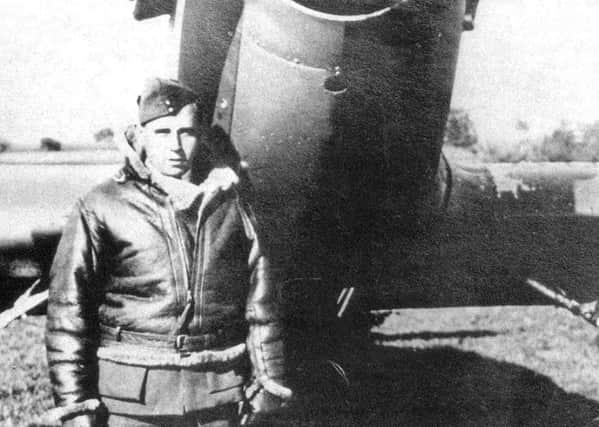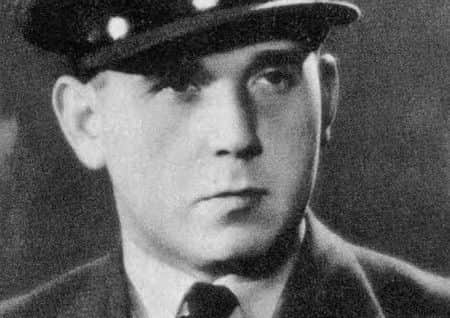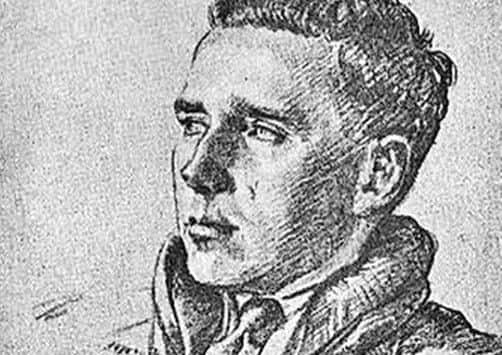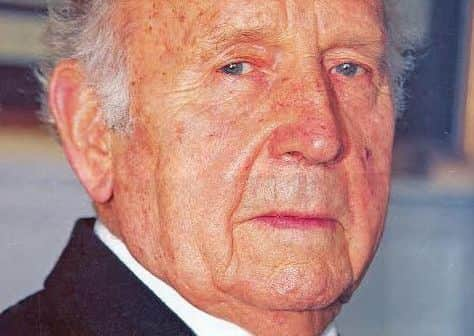The war hero who went from Hurricane Ace to the Light Blue Pimpernel
This article contains affiliate links. We may earn a small commission on items purchased through this article, but that does not affect our editorial judgement.


His family later moved to Surbiton in Surrey and in 1937 he joined the RAF Volunteer Reserve.
He commenced his flying training at No 5 Elementary and Reserve Flying Training School in Hanworth, Middlesex and in February 1938, was accepted for a short service commission.
Advertisement
Hide AdAdvertisement
Hide AdAfter completing his flying training, he was posted to RNAS Ford, Sussex where he flew Royal Navy personnel in Blackburn Shark and Supermarine Walrus aircraft, enabling them to gain air experience.


His next posting was to Hawker Hurricane-equipped No 87 Squadron at Debden.
When war was declared his squadron flew to Rouen-Boos in northern France to provide air cover for the British Expeditionary Force.
During the ‘Phoney War’ the squadron was mainly tasked with air cover for the troop ships crossing the Channel.
Advertisement
Hide AdAdvertisement
Hide AdHowever when the German Blitzkrieg began on May 10, it was soon in action.


During the next nine hectic days, David shot down seven enemy aircraft, damaged three and shared in the destruction of five others.
After his final victory he was forced to crash land his badly-damaged aircraft and was ordered back to England.
The squadron reformed on May 26, 1940 at Church Fenton and in June was one of the squadrons covering the Dunkirk evacuation.
Advertisement
Hide AdAdvertisement
Hide AdIn recognition of his service in the Battle of France, David was awarded a DFC and Bar.


His successes continued during the Battle of Britain. He destroyed a Ju 88 and Bf 109 on August 11, a Ju 87 Stuka on the 15th and a Ju 88 and a Bf 109 ten days later.
On September 15, David achieved his final victory with No 87 Squadron when he destroyed a He 111 bomber.
He was then posted to RAF Tangmere as a flight commander in No 213 Squadron and on October 19, he badly damaged a Ju 88 conducting a weather reconnaissance mission.
Advertisement
Hide AdAdvertisement
Hide AdIt was later learnt the Junkers bomber with its crew dead and pilot seriously wounded, managed to limp back to France where it crash landed.
In November, David left Tangmere for the Spitfire-equipped No 152 Squadron but before the end of the year was rested from operations and posted to instruct at No 55 Operational Training Unit at Usworth, near Newcastle.
Here, he spent the next two years instructing and by the end of his tour, had been promoted to wing commander.
In early 1943, David was posted to the Middle East to command No 89 Squadron, a night fighter unit equipped with Beaufighters.
Advertisement
Hide AdAdvertisement
Hide AdThe squadron achieved much success, claiming 150 enemy aircraft destroyed in the Mediterranean theatre.
In 1944 David was granted a permanent commission in the RAF and was promoted to group captain at 26 years of age.
When the war ended, he continued in the Air Force and in March 1951, his last flying tour came to an end.
Promoted steadily, he was posted to the MoD in London where he was given responsibility for the training of crews for the new V-Force bombers.
Advertisement
Hide AdAdvertisement
Hide AdIn this position he often was able to fly in the early production Vickers Valiants then entering service.
In April 1956, he was posted as Air Attaché to Hungary and later that year he witnessed the Russians crushing the Hungarian uprising.
He became known as the ‘Light Blue Pimpernel’, helping many freedom fighters to escape from the Hungarian Secret Police.
Group Captain Dennis David CBE DFC* AFC retired from the RAF in May 1967 and died, aged 82, on August 25, 2000.
Advertisement
Hide AdAdvertisement
Hide AdThis article, written by David Coxon, Tangmere Military Aviation Museum’s curator, is the 30th in a series of monthly articles on the people of RAF Tangmere.
More information on the museum, including opening times and entry prices can be found on the website: www.tangmere-museum.org.uk
Don’t miss out on all the latest breaking news where you live.
Here are four ways you can be sure you’ll be amongst the first to know what’s going on.
1) Make our website your homepage at www.chichester.co.uk/
Advertisement
Hide AdAdvertisement
Hide Ad2) Like our Facebook page at www.facebook.com/ChichesterObserver
3) Follow us on Twitter @Chiobserver
4) Register with us by clicking on ‘sign in’ (top right corner). You can then receive our daily newsletter AND add your point of view to stories that you read here.
And do share with your family and friends - so they don’t miss out!
The Chichester Observer - always the first with your local news.
Be part of it.